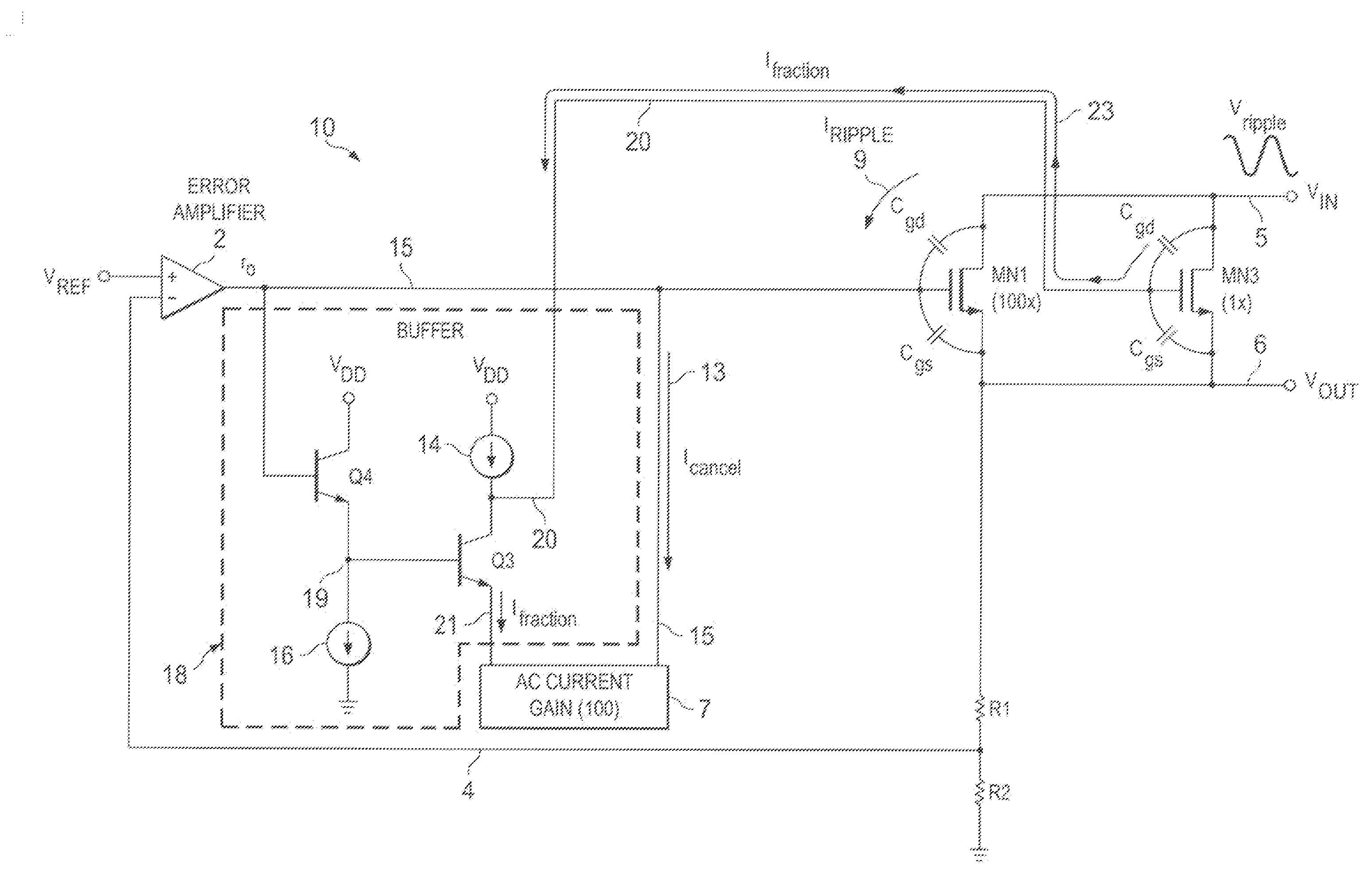Nmos ldo psrr improvement using power supply noise cancellation
a power supply and noise cancellation technology, applied in the field of low dropout voltage regulators, can solve problems such as introducing switching noise, limited use, and increasing system complexity
- Summary
- Abstract
- Description
- Claims
- Application Information
AI Technical Summary
Benefits of technology
Problems solved by technology
Method used
Image
Examples
Embodiment Construction
[0033]Referring to FIG. 2, a low-dropout (LDO) voltage regulator 10 includes an error amplifier 2 and a large N-channel pass transistor MN1 having its drain connected by input conductor 5 to the unregulated noisy power supply input voltage VIN. The source of pass transistor MN1 is connected to the output conductor 6 on which the regulated output voltage VOUT is generated. (Note that the source and drain connections of N-channel pass transistor MN1 in FIG. 2 are opposite to the source and drain connections of the P-channel pass transistors shown in Prior Art FIGS. 1B and 1C.) The (+) input of error amplifier 2 is coupled to a reference voltage VREF, which typically is generated by a conventional band gap reference circuit. A resistive voltage divider circuit including feedback resistors R1 and R2 feeds the scaled-down regulated output voltage VOUT on conductor 6 back via conductor 4 to the (−) input of error amplifier 2. The output of error amplifier 2 is coupled by conductor 15 to d...
PUM
 Login to View More
Login to View More Abstract
Description
Claims
Application Information
 Login to View More
Login to View More - R&D
- Intellectual Property
- Life Sciences
- Materials
- Tech Scout
- Unparalleled Data Quality
- Higher Quality Content
- 60% Fewer Hallucinations
Browse by: Latest US Patents, China's latest patents, Technical Efficacy Thesaurus, Application Domain, Technology Topic, Popular Technical Reports.
© 2025 PatSnap. All rights reserved.Legal|Privacy policy|Modern Slavery Act Transparency Statement|Sitemap|About US| Contact US: help@patsnap.com



